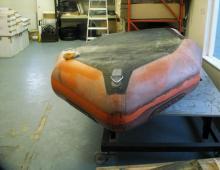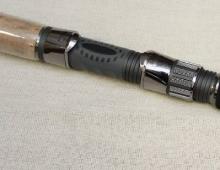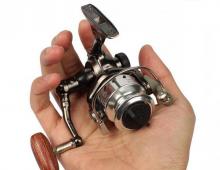Choosing an echo sounder for fishing
Today it is difficult to imagine an angler who does not use advanced technologies on the pond. Various gears made of innovative materials, comfortable boats, powerful motors, functional equipment have appeared that simplify and modernize the fishing process as much as possible. Now, literally, an obligatory element of the ammunition of the current angling enthusiast is an echo sounder, which will be discussed below.
What is an echo sounder for?
Sonar operation based on the supply of ultrasonic vibrations into the water and their subsequent processing. The wave sent by the device is reflected from obstacles, which makes it possible to determine the depth and relief at a specific point in the reservoir. Further, the signal is converted into electrical and displayed on the monitor.
The echo sounder consists of the following main parts:
- Transducer or sensor. It is intended for giving and reception of an ultrasonic signal.
- A monitor or display that displays a graphical image from the converted ultrasound signal.
An echo sounder for fishing makes it easier to find fish and promising places for their stay. With its help, you can thoroughly explore the terrain in the fishing area and determine potentially catchy places where, with a high degree of probability, you can count on a bite.
The display of this instrument shows:
- The topography of a body of water that changes continuously as the boat moves.
- Flooded snags and other obstacles.
- Soil structure.
In addition, any echo sounder shows the depth at the place of fishing and the temperature of the water "overboard".
So, using a sonar, a modern angler can find out what is happening under water and where to look for fish. He displays various brows, falls, grooves, navels and tubercles,"draws" on the monitor the location of flooded trees and other objects. This allows you to quickly adjust the technique and tactics of fishing, choose the most suitable gear and bait. Of course, the echo sounder is most in demand among fans of spinning and trolling. It can also help the followers of the feeder and float rods, who are going to fish from a boat in an unfamiliar water area.
What can a modern echo sounder do?
The simplest and basic functions of an echo sounder have been described above. This device was originally created to study the bottom topography and detect fish. The latest models of echolocators are a multifunctional product, which contains GPS navigator, chart plotter, structure scanner functions and others.
Today, ranging from mid-budget models to the premium segment of the market, the angler acquires a device that additionally performs the following functions:
- GPS navigation.
- Setting checkpoints, searching for optimal travel routes.
- Saving the coordinates of catch points.
- Recording routes.
- Load maps of reservoirs and create your own.
- Detailed rendering of the relief, display in 3D mode.
As you can see, the echo sounder is a high-tech device that combines many features. It makes fishing more exciting, dynamic and productive. When used correctly, it becomes a real assistant to the angler, without which modern fishing is simply unthinkable.
Approaching the choice of echo sounder thoroughly, you need to pay attention to its performance. The main ones are:
- sensor power;
- display size and resolution;
- sensor sensitivity;
- the number of rays.
Sonar transducer power determines the quality of the transmitted and received signals. The higher this parameter, the better and clearer the image on the display is, respectively, and the more reliable the device works in dirty water conditions and at great depths.
Sensor power can be peak and average. Both indicators are indicated in watts and must be indicated in the documentation for the echo sounder. The higher these characteristics, the more expensive the device.
The size of the display and its resolution determine how detailed the display of the bottom topography will be. Naturally, expensive models with large color screens show the picture much better, but they cost a lot of money. Budget echo sounders display scan results on a low-resolution monochrome monitor.
The sonar transducer frequency determines the parameters of the ultrasonic beam emitted by the transducer. At a low frequency, the angler gets the opportunity scan great depths. It is worth noting that the displayed picture will not always be clear and depends on the specific model of the echo sounder.
The high frequency is intended for shallow depths. It allows you to scan such areas, getting a high-quality detailed picture. The most budget models have one beam and therefore scan at the same frequency. Expensive echo sounders have up to four different beams that explore the bottom in different modes.
The sensitivity of the echo sounder sensor is set to high. But it should be understood that in this case, everything, even minor interference, will certainly be displayed on the display. Most devices have the ability to adjust this parameter, setting the optimal value for a specific fishing situation.
Which echo sounder to choose? Survey of popular models.
To correctly determine the choice of an echo sounder, you need to imagine in what conditions it will be operated. Obviously, for small reservoirs it is not required obligatory presence of a navigator, chartplotter and other "fashionable" features. Another thing is if the angler prefers to fish in vast areas of water - large lakes, endless reservoirs or full-flowing large rivers. Here, the more possibilities the device provides, the better.
So, for small river and small lake any budget echo sounder model that has a monochrome display with a low resolution will do. This device will be quite enough to determine the topography and structure of the bottom and identify promising points or fish sites. Suitable models are shown below.
Portable echo sounder – Practitioner ER-6PRO
echo sounder practitioner ER-6 proBrief characteristics:
- Black and white screen size 3x5 cm and resolution 64x128 pixels;
- Screen backlight;
- Battery operation;
- Scanning depth - 25 m.
Pros:
- mobility and compactness;
- waterproof case;
- displays the bottom relief and the depth of the fish;
- air temperature sensor;
- small price.
Minuses:
- small screen;
- two menu navigation buttons;
- the sensor quickly fails;
- large blind spots.
in 2016, an updated version of this model was released: it features an improved display and backlight, a stronger cable, and increased sensor sensitivity.
See the video for a more complete list of differences. ER-6 pro 2 from ER-6 pro:
For an average river or a decent-sized lake It is advisable to purchase a device from the middle price range. Many models of such sonar models allow you to mark catch or control points, as well as plot routes and display the history of the sonar.
echo sounder
 echo sounder lowrance HOOK 3x
echo sounder lowrance HOOK 3x Brief characteristics:
- Advanced Signal Processing (ASP) function;
- Fast frequency range switching mode;
- Fish I.D technology to search for fish;
- Swivel display mount.
Pros:
- ease of setup;
- waterproof case;
- good work at speed;
- the screen is clearly visible in the sun;
- the accuracy of displaying the bottom topography and snags;
- price.
Minuses:
- the size;
- no GPS.
When fishing on a large river, a reservoir or a huge lake with great depths preference should be given to professional multifunctional devices. They allow not only to lay routes for moving around the water area, but also to create maps and view the bottom topography in different modes from different angles.
Fishfinder Garmin Striker 5dv
 echo sounder Garmin Striker 5dv
echo sounder Garmin Striker 5dv Brief characteristics:
- Easy to use fishfinder with 5" color display, built-in high sensitivity GPS - receiver and scanning sonar Garmin CHIRP DownVü™
- Find the fish, mark the point and return to the saved location
- Transducer included Garmin GT 20 with CHIRP (77/200 kHz); transmission power (500W RMS )/(2,400 W maximum) with 455/800 kHz CHIRP DownV ü (power 300W)
- The possibility of improving the system to obtain CHIRP high power with transducer GT 22 or GT 23 (sold separately)
- Sharing waypoints and routes with other devices STRIKER or echoMAP™



